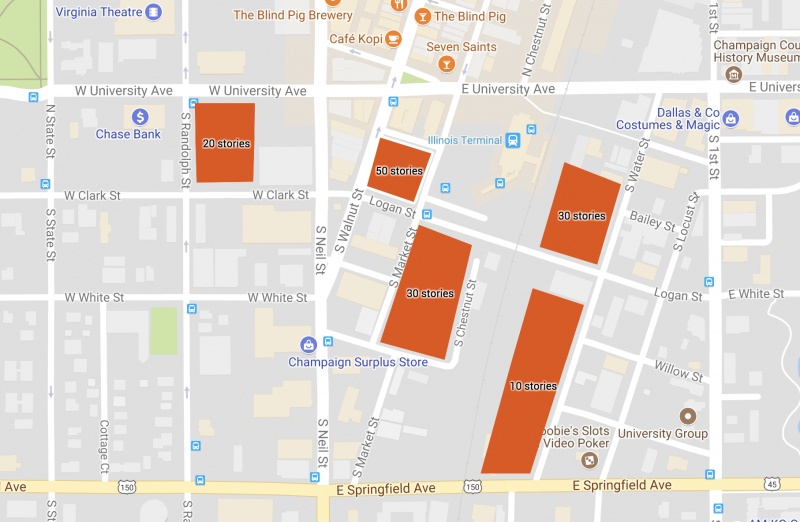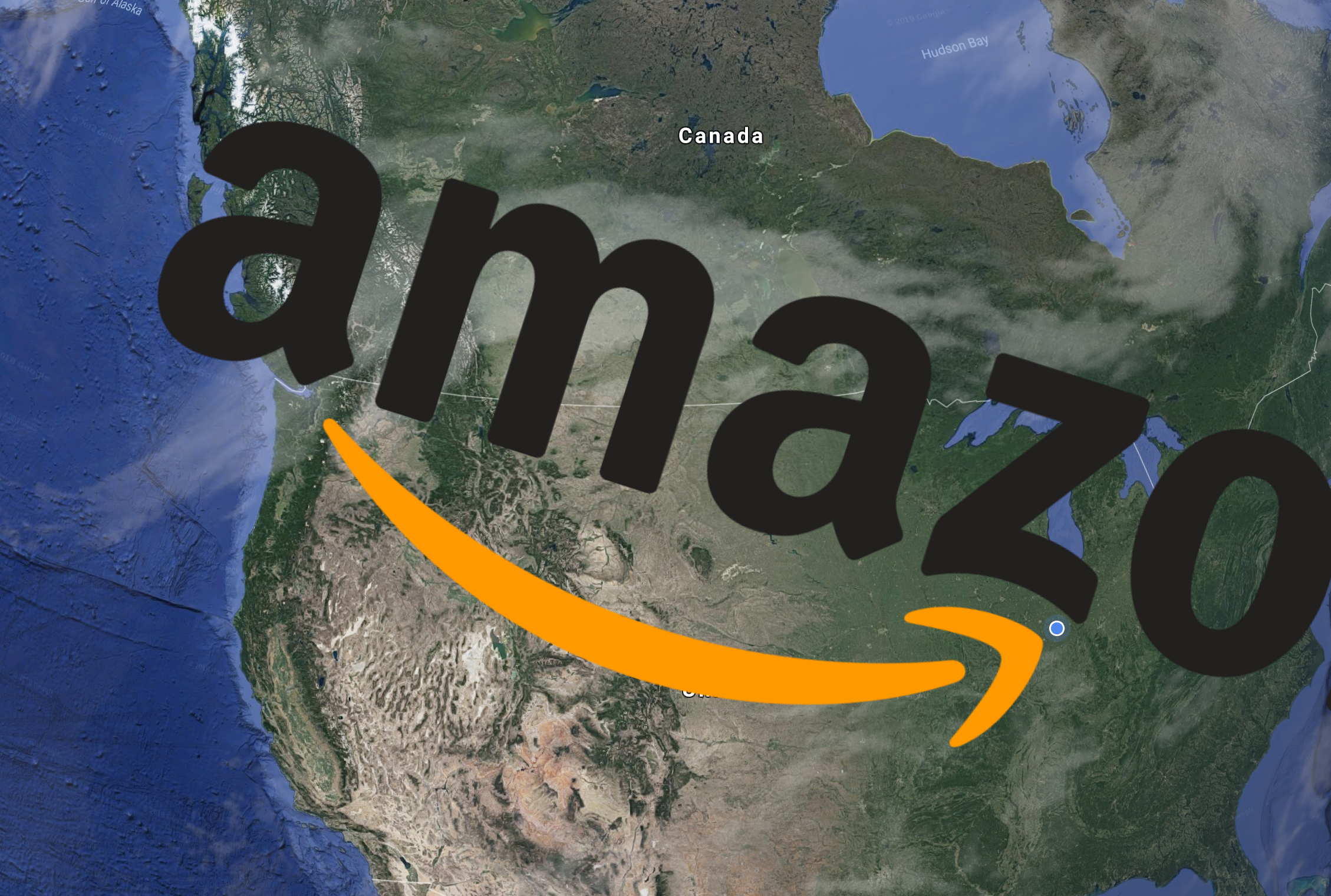OK, let me start this off by saying it is not happening. Be happy, sad, or relieved as you may. Champaign-Urbana will not get Amazon’s HQ2, C-U did not even apply. This article is more of my way of experimenting with ridiculous urban planning ideas. Perhaps this would’ve been a good story to save for April Fool’s, but I thought I could try my best to make a realistic prediction of what would happen if this occurred.
When Amazon revealed its intention to build a second headquarters, bringing $5 billion in investment and 50,000 jobs, 238 American and Canadian cities jumped at the opportunity and bidded to reel in the new headquarters. Tulsa devoted an entire room in its city hall to create a staging room to lure in the company. Tucson sent Amazon a 21-foot saguaro cactus for some reason, which Amazon refused. Gary, Indiana, sent a letter in first-person and misspelled “Purdue” University (spelling it like the Perdue Chicken Company). Stonecrest, Georgia, offered to cede land for a whole new town called Amazon, Georgia. New York illuminated its skyline in “Amazon Orange.” Only the last of these, New York, made the 20-city shortlist. But, imagine if Amazon chose the dark horse candidate, a pair of mid-size midwestern cities, enticed by the University of Illinois’ history of technological advancements and robust computer science programs. They’re ready to shake up the whole region. Who needs a big city anyway?
Amazon wants an urban environment, so Downtown and Midtown Champaign would probably be the most likely location for the new Campus. Much of the new development in this area, both offices, shops, and workforce residences, would be centered around Illinois Terminal; this is because of its role as a transportation hub for buses, thus helping facilitate more efficient commutes, and intercity travel, allowing for employees and executives to travel for business and leisure. The campus would drastically change Champaign’s skyline, adding three buildings taller than anything seen in Illinois outside of Chicago. The iconic Champaign Municipal Building would be dwarfed and the skyline would closer resemble Milwaukee than anything imagined in Central Illinois.
Amazon requested 8 million square feet of office space, here is roughly what that could look like.

But it does not end here. Now Champaign-Urbana would have to absorb the 50,000 employees in terms of housing, infrastructure, and services–not an easy task. Younger workers would demand apartments, workers with families would demand townhomes and single-family houses. Midtown and Downtown will become a flurry of apartment construction, tracts of new homes will spring up on C-U’s peripheries. Though many of Amazon’s employees would be young and childless, the twin cities would still need to build at least one new high school and a handful of new elementary and middle schools to keep up with increasing enrollment. The towns will have to upgrade their sewage treatment capacity and install more-heavy duty sewers to serve a population density that the original civil engineers never expected. Where possible, the towns would have to widen roadways and highways to meet demand. With enough outward growth, the city would probably need to construct commuter rail to Mahomet and Rantoul to alleviate traffic and Savoy-Champaign-Urbana light rail would be seriously considered as apartments spring up around the area. Assuming Champaign-Urbana did not offer any incentives, just preparing for this would still be a multi-million to multi-billion dollar proposition to get jobs that aren’t even guaranteed to stay in C-U (Amazon has made no promises to maintain their jobs in whatever city they choose).
If we got HQ2, the area would have to scramble to deal with demand, something even Seattle has struggled with. If handled improperly, which would likely be the case in such rapid growth, Champaign would quickly become unaffordable and displace many of the area’s most vulnerable residents, particularly in North Champaign. Perhaps Chanute could be repurposed for new housing and this would Rantoul rebound. Elsewhere, Mahomet and Savoy would continue to grow.
However, there could be good things from this, too. The influx of new residents would warrant more cultural amenities, restaurants, bars, and events. Such a large company requires top notch transportation, so Willard Airport would likely expand to become an international airport and see many more flights a day to a multitude of destinations (though taxpayers would probably be on the hook to pay for it). On top of that, Champaign-Urbana would probably get some novelties: a minor league baseball team, a long-desired Trader Joe’s, and hopefully a couple more Maize outposts. But the cities we love would look nothing like they did the day before the day they recruited Amazon.
Maybe some alternate universe has to deal with this, but we don’t. Yet this article provided a good segue from my last article. Thinking about what type of place we want to be may be easier when a big company wants to seek its teeth into your community or some massive change looms on the horizon, but its harder to think about on a regular basis. Do we want to grow into the next Austin? What can we do better? How can we change to become better? C-U is going to change, so we must make sure we’re ready for change and to preserve what makes our region special in the process. And thank God that we didn’t send Amazon any plants.








